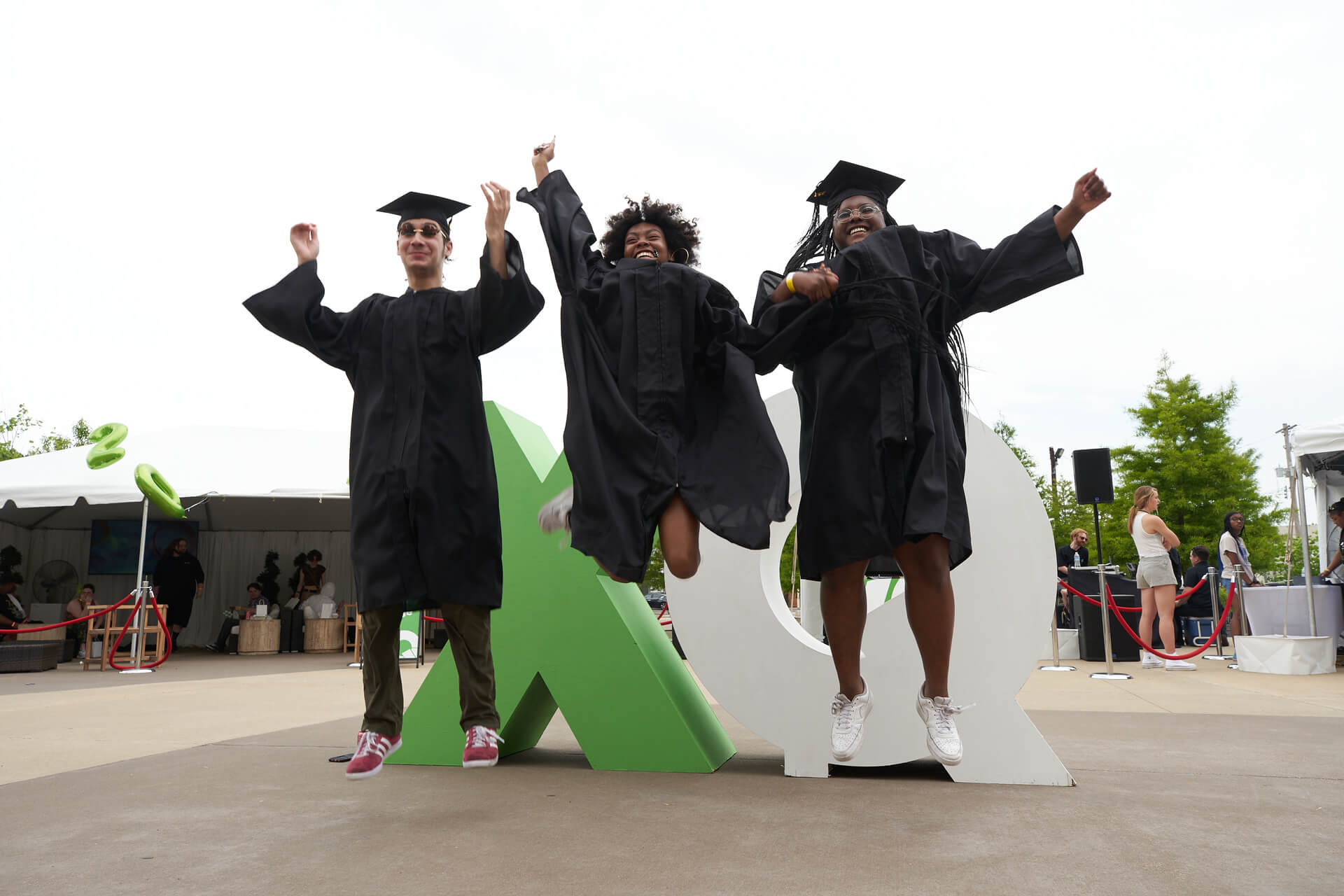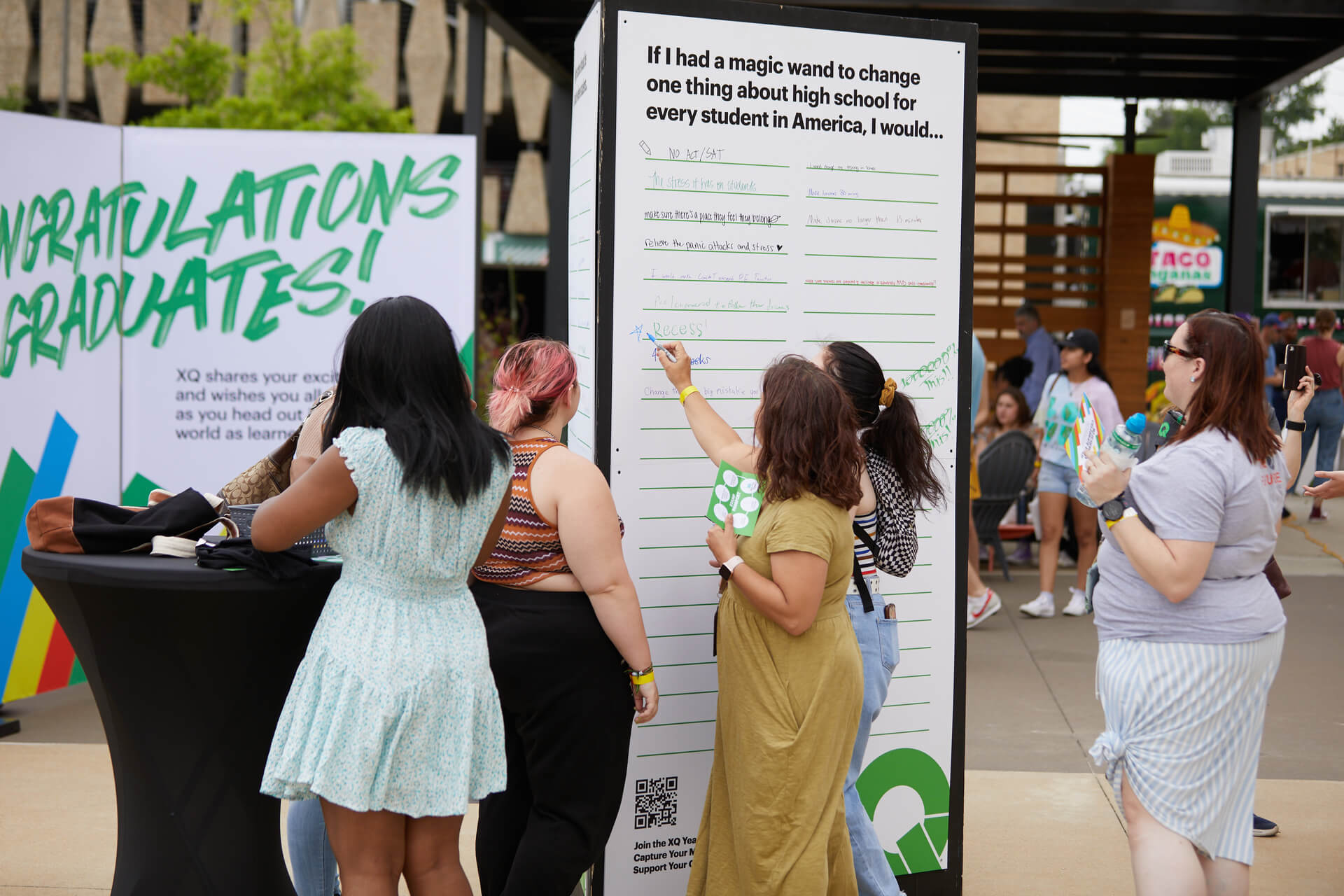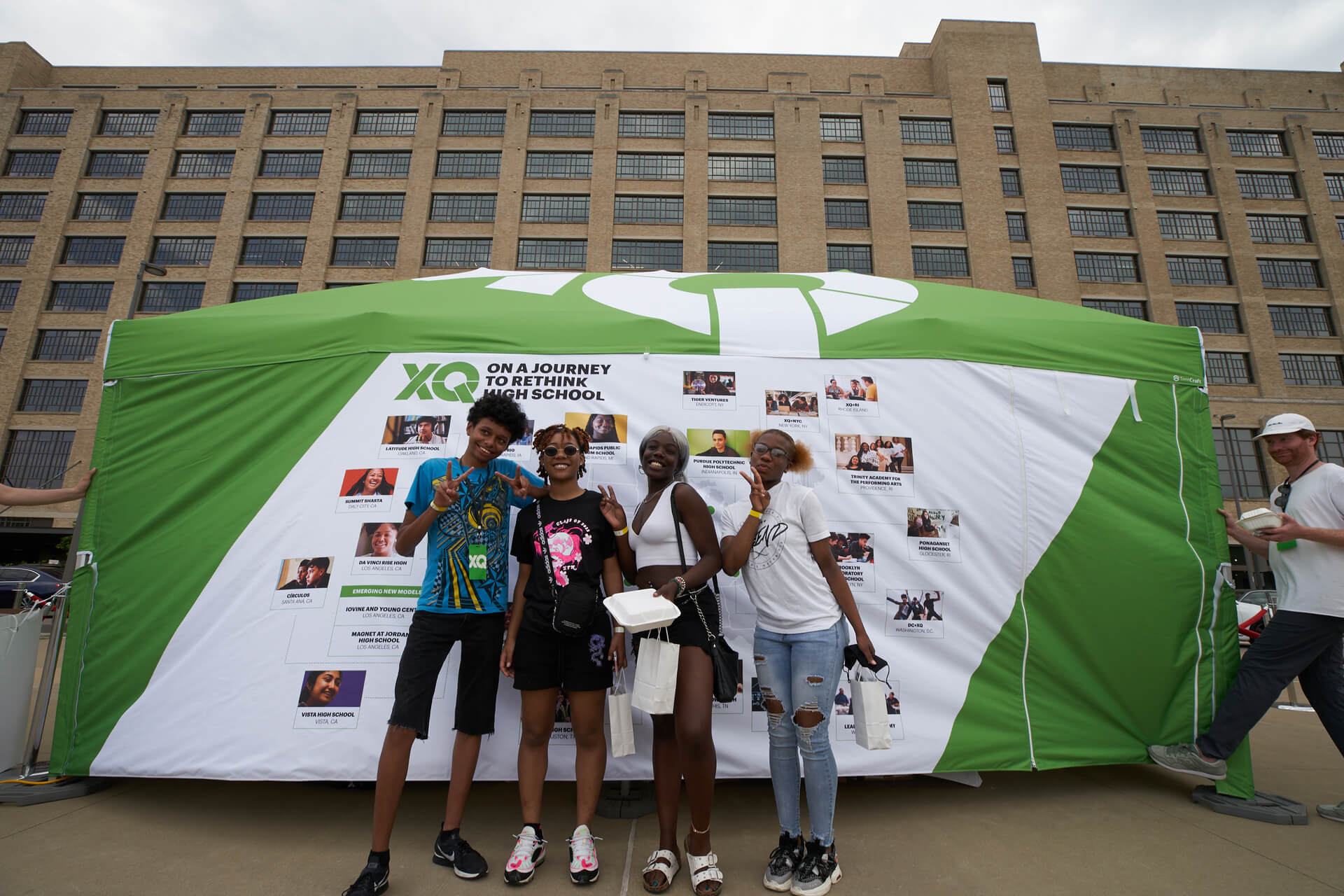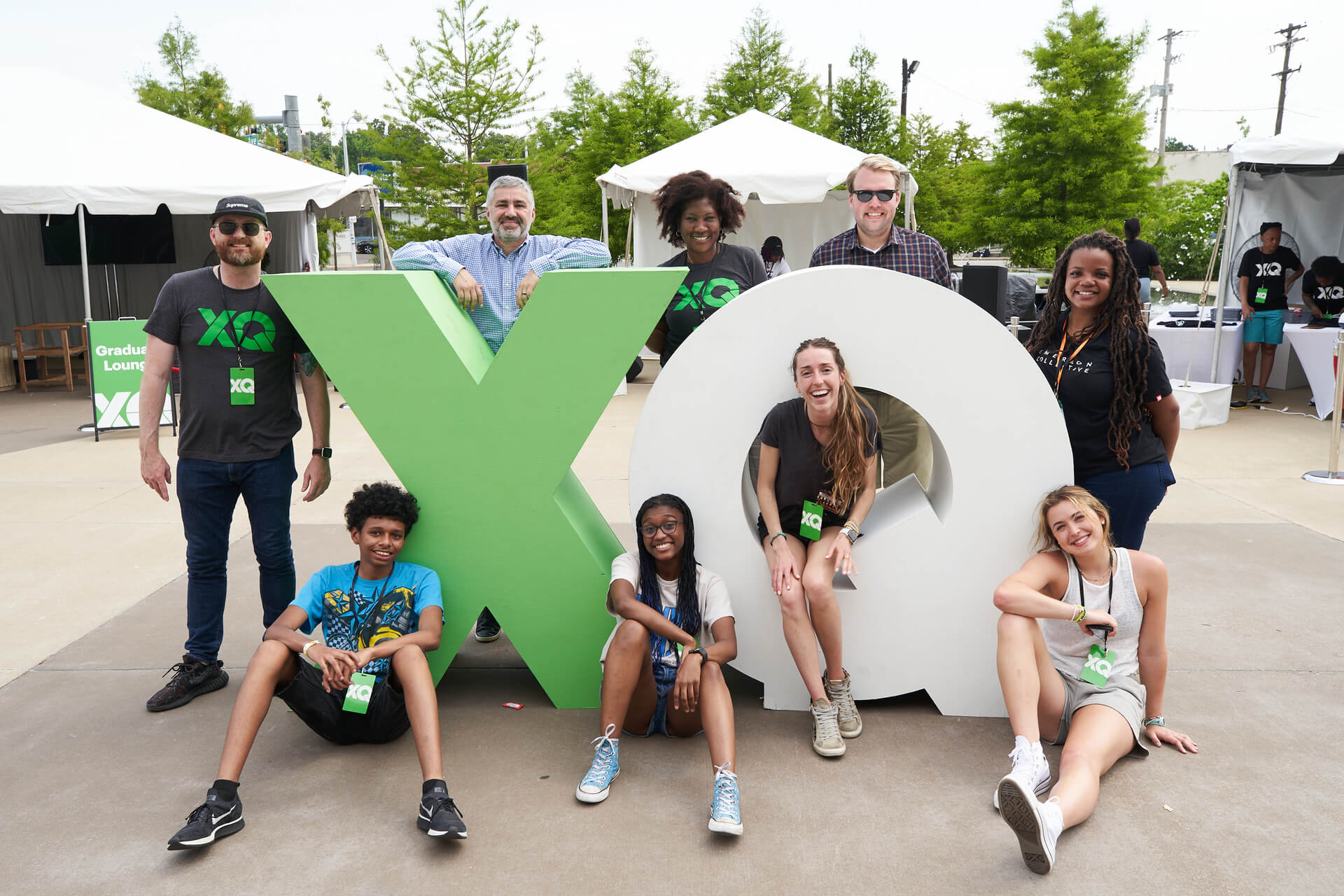“Diverse-by-Design” Crosstown High in Memphis Graduates Its First Class
Since it opened its doors in 2018, Crosstown High pushed the boundaries of rethinking high…

Since it opened its doors in 2018, Crosstown High pushed the boundaries of rethinking high school. Its founders envisioned a space that was diverse by design, where project-based learning would help students from across Memphis feel more engaged in their education, and where the classroom would feel more connected to the community.
Now, as the first graduates of Crosstown leave the school with a unique understanding of how to face the challenges of the world, empowered to find solutions, it seems the school realized its vision.

Diversity by Design
School segregation in Memphis has only increased in the past 50 years, according to an analysis by Chalkbeat. As a 2020 brief from the Economic Policy Institute shows, segregated schools lower educational outcomes for Black students and widens the performance gap between Black and white students.
In 2017, a little more than half of Memphis schools were highly segregated, with white students making up only 7 percent of the student body. That inequity led to slashed budgets, school closures, and hundreds of teacher layoffs.
To create a school that truly mirrors the diversity of the city and stem the tide of segregation, Crosstown recruited students from a large cross-section of the city. The student population at Crosstown in the 2021-22 school year was 55 percent Black, 31 percent white, six percent Latino, six percent identifying as two or more races, and two percent “other.”
Moreover, students and educators at Crosstown benefit from the varied perspectives everyone brings to the collaborative environment. But the first group of ninth graders—now the school’s first graduates—laid the foundation.

The Results Show
If the first graduating class marks the beginning of a trend, Crosstown will be setting students up for success. Preliminary data show that a full 97 percent of 2022 Crosstown seniors graduated on time. Typically, just 78 percent of Shelby County Public Schools students graduate in four years. Additionally, 84 percent of Crosstown graduates plan to attend a four-year college or university or community college. By contrast, just about 46 percent of Shelby County graduates typically attend either a two- or four-year college.
But beyond the statistics, Crosstown creates an environment that inspires students to reflect, grow, and change as life-long learners and collaborators. “I realized in my past four years that learning isn’t just English, math, science, and history,” explains Crosstown graduate Ava. “It really is learning about yourself and learning about how you interact with everyone else in the environment around you.”
This attitude around growth and learning will stay with Ava and her fellow Crosstown grads as they head all over the country next year, from Northeastern University to the University of Southern California.
“They really exceeded our wildest expectations in terms of where they are heading next and what they will be doing,” reflects Crosstown co-founder Ginger Spickler. In all, the school’s class of 2022 received over $10 million in scholarships, including full rides to Howard University, Rhodes College, and Morehead State University.

Community is the Classroom
With the success of its first graduating class, we can ask and begin to see how Crosstown created an environment where all students learned to thrive.
Located on the fourth and fifth floors of the Crosstown Concourse, students share the space with an assortment of businesses, arts organizations, health care providers, a YMCA, a credit union, and a dentist’s office. It’s a fitting space for a school that erases the line between community and classroom.
“From the beginning, community partnerships have been important to the work of students and staff,” explains Spickler. “Project-based learning isn’t that powerful if it’s not connecting to the world outside our doors. Learning is more powerful if they see how it connects.”
Crosstown requires a capstone class for each grade. Students spend months working on topics of their choice, which helps them see how their learning aligns with their personal goals and the real world.
Chris Terrill, Crosstown co-founder and executive director, said partnerships permeate every aspect of Crosstown, during and after the school day.
“One day I came in, and one of our congressmen was in the building because my government teacher had invited him to speak,” Terrill recalls. “We had multiple attorneys in the building, whether for civics work or government class. Many of our students had internships or jobs with business in the concourse.”
For instance, Vera, a Crosstown senior, worked with the Crosstown Arts Theater nonprofit to stage the school’s first musical. Vera worked to get the rights to “You’re a Good Man, Charlie Brown,” conducted casting, marketed the musical, and starred in the production.
“It was so cool to learn how to build connections with people doing something I could do in the future as a career path, and getting to design solutions and trying to figure out how to get things done when not everything could be done exactly as I wanted it,” explains Vera.
Another group of students partnered with a local seamstress to research the link between fashion and the environment. Together they worked to create a line of disposable clothes as well as a magazine to share the benefits of reusing fabric.

Why Mission and Vision Matter
The success of the school, however, doesn’t mean Crosstown did not confront challenges. From adapting community partnerships for the COVID-19 pandemic, to the growing pains of welcoming new students and staff for its first years, the school learned a number of lessons.
One of those is the importance of keeping their mission and vision front and center in everything they do.
“I think the hardest thing is that when you’re adding a grade every year, you’re having to hire a whole new set of teachers,” says Spickler. “One of the biggest challenges was continuing to be really clear about why we were founded, what we’re trying to accomplish, and making sure we’re keeping our mission and vision central to our work.”
In addition to creating a diverse environment, another central pillar behind the philosophy of Crosstown is taking student voices seriously, and that goal has been reflected in the evolution of the school over the last four years.
“They were such an integral part of our story for the first four years of our existence,” says Spickler. “They felt like co-workers in some way, and we felt strongly that they were building the school with us, and we valued their opinions and felt like they truly were co-creators of this school.”
“They made sure that all students were heard and that we had a say in everything we did,” said graduate Angell.
One important way that student voice has shaped Crosstown is the school’s approach to discipline. “The last thing we want to do is suspend students,” said Terrill. “We want to get to the root of the problem, which often doesn’t involve school.”
Staffers say Crosstown’s restorative justice approach leads to deep relationships between students, teachers, and administrators, and a better understanding of adolescents than through punitive actions.
“In that regard students feel at ease when they come through the door, knowing they will be treated fairly,” Terrill added, calling the deep sense of belonging students feel towards Crosstown the “secret sauce” of the school’s success.
What’s Next for Crosstown High
After the success of its first four years, Crosstown is looking ahead—though former students will continue to have a voice in the school’s development. The school will welcome back alums next year to mentor current students and talk about their college experiences. Alums will also meet with staff members to share how they were and weren’t prepared for life after Crosstown.
And the school will turn its gaze beyond Memphis. Terrill is planning a year-long fellowship sabbatical, traveling the world to visit other innovative high schools to bring ideas back for Crosstown and other XQ Schools.
Meanwhile, Spickler is excited for the school to launch an official professional development program, formally inviting school leaders from around the country to Crosstown. She said this is how they can contribute to transforming high schools across the country.
“It’s not just about creating a handful of innovative schools, but creating a movement to change what high school looks like nationwide,” she explains. “And so we feel like we’re asking the right questions and we learned some hard lessons along the way that we think can help other folks avoid.”
Read more about Crosstown High and how it’s transforming high school; how its students experience innovative schooling; how Crosstown is changing education through a vertical urban village; and influencing other schools around the country. And learn more about all the XQ Schools at: xqstaging.wpengine.com/schools









